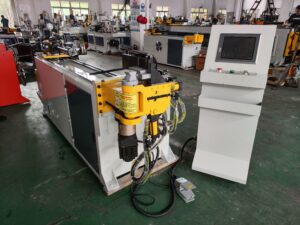CNC Pipe Cutting Machine Construction: Precision Meets Efficiency in Modern Manufacturing
Introduction: The Art and Science Behind CNC Pipe Cutting
In the intricate dance of modern manufacturing, CNC (Computer Numerical Control) pipe cutting machines stand as virtuosos, combining precision engineering with digital intelligence to craft components that fuel industries from oil and gas to aerospace.
Subheading 1: Understanding the Fundamentals of CNC Technology
Before we embark on the specifics of CNC pipe cutting machines, it’s crucial to grasp the basics of CNC technology. In the context of pipe cutting, this means translating digital designs into precise physical cuts, ensuring each piece matches its blueprint perfectly.
Subheading 2: Key Components and their Functions
A. Control System: The Brain Behind the Brawn The heart of any CNC machine is its control system. For pipe cutting machines, this system interprets CAD/CAM files, dictating the speed, direction, and depth of cuts for seamless execution.
B. Drive System: Precision in Motion Powered by servo or stepper motors, the drive system converts electrical signals into mechanical movements, guiding the cutting head along the pipe’s surface.
C. Cutting Head and Tooling: Versatility at Work Equipped with plasma, laser, or oxy-fuel torches, the cutting head is the tool that interacts directly with the material.
D. Pipe Manipulation System: Adapting to Every Curve To handle pipes of different diameters and lengths, CNC pipe cutting machines employ advanced manipulation systems. These can include clamping devices, rotary chucks, and roller beds, all designed to secure and rotate the pipe while maintaining positional accuracy throughout the cutting process.
Subheading 3: Innovations Driving Efficiency and Accuracy
A. Integrated Software Solutions Contemporary CNC pipe cutting machines leverage advanced CAM software that not only translates designs but also optimizes cutting paths, reducing waste and increasing throughput. Features such as nesting algorithms ensure maximum material utilization.
B. Automated Material Handling Automation in loading, unloading, and sorting pipes significantly reduces manual intervention, enhancing productivity and safety. Robotic arms and conveyors streamline the workflow, allowing for continuous operation.
C. Adaptive Control Systems Modern CNC systems incorporate adaptive control, enabling the machine to adjust cutting parameters in real-time based on feedback from sensors. This feature maintains cut quality even when dealing with variations in material thickness or hardness.





